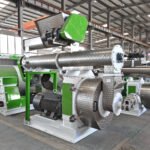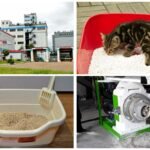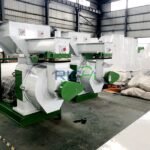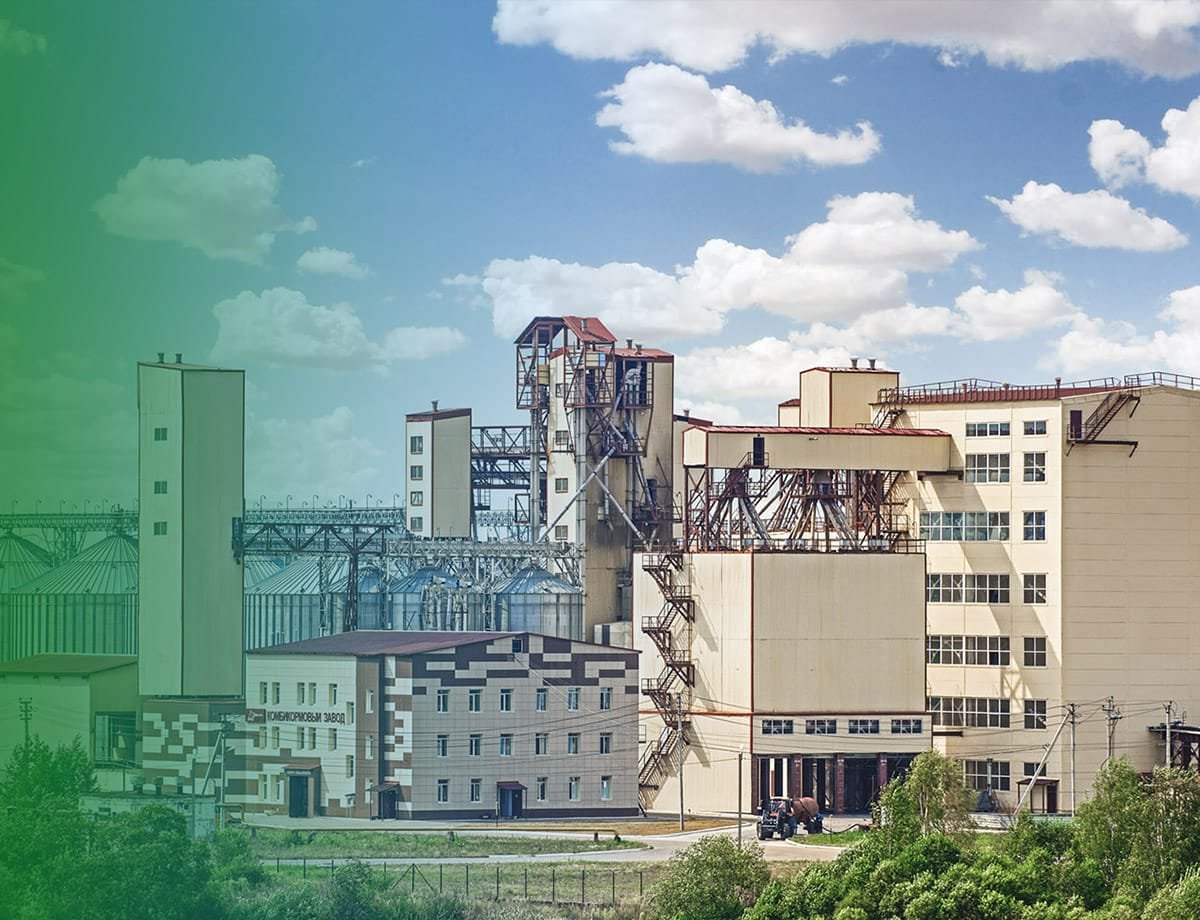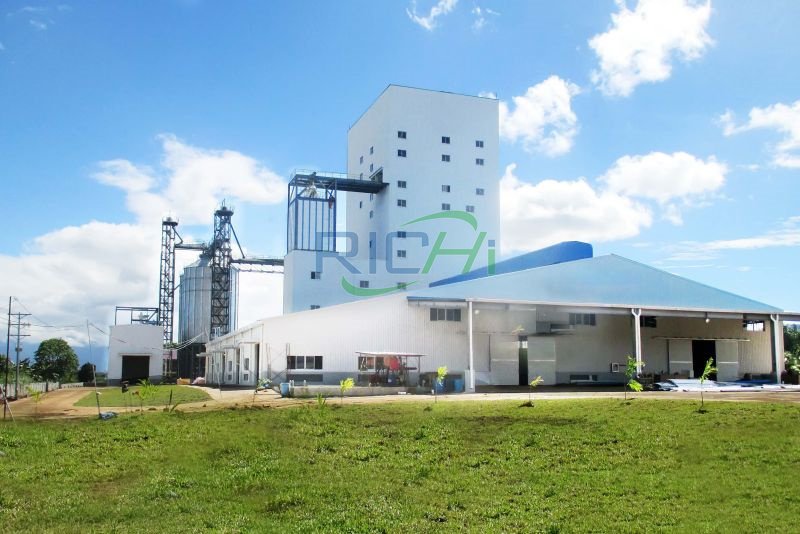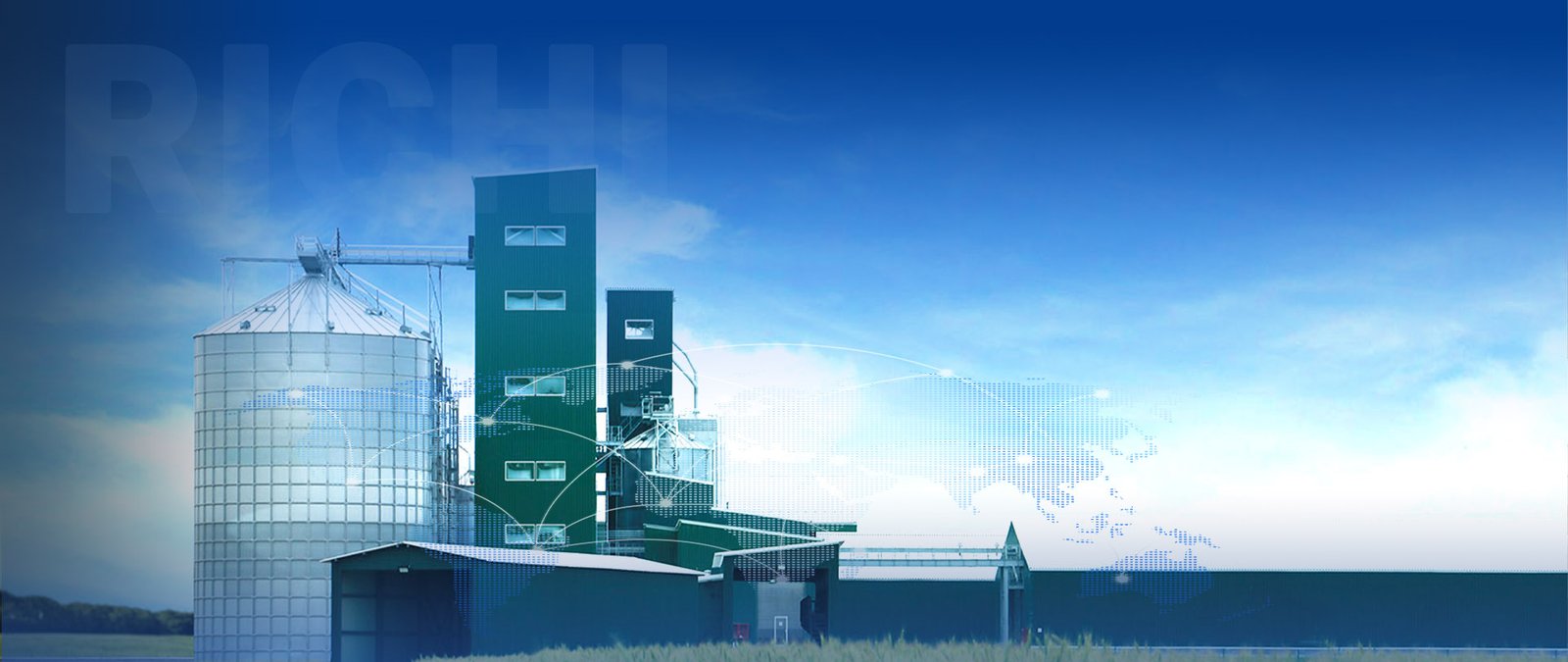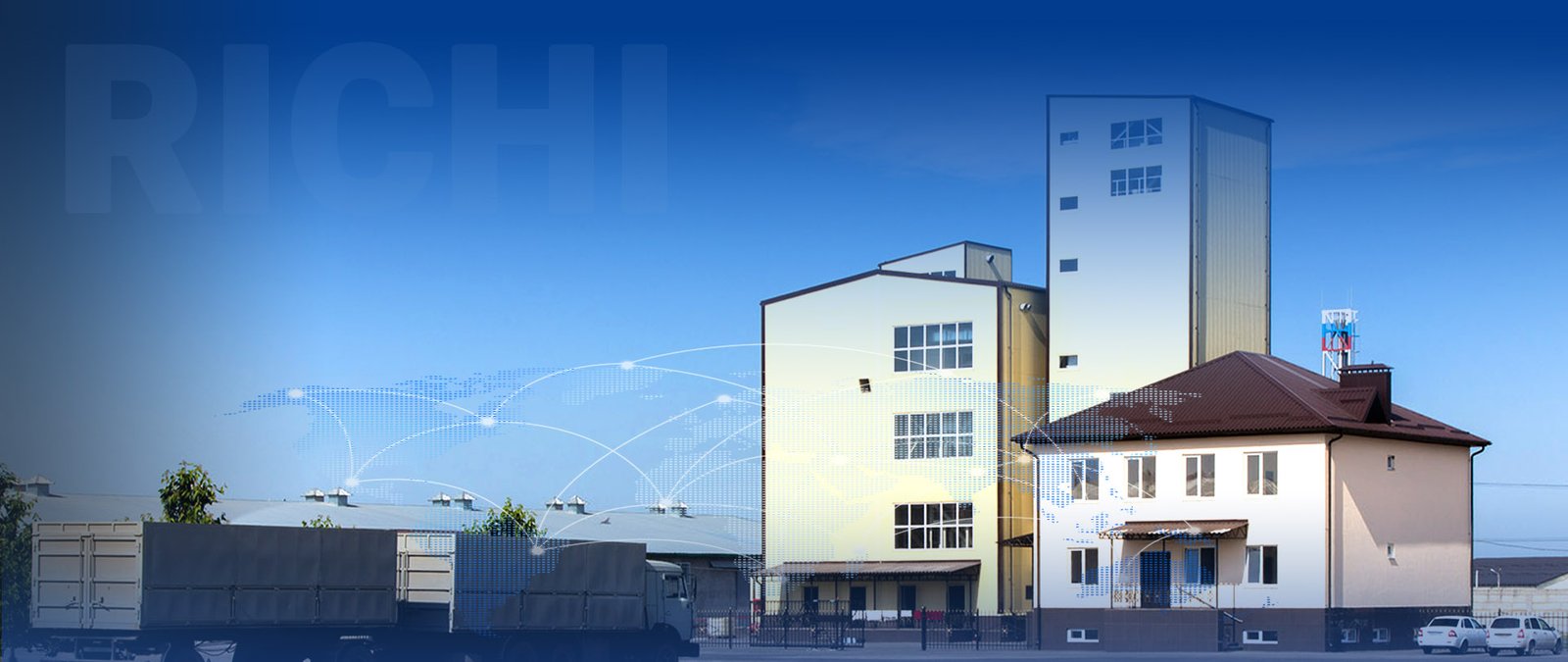A 100 tons per hour (t/h) feed mill engineering project represents a substantial investment in the animal feed sector. The cost structure of such a large-scale operation plays a crucial role in determining its profitability and annual sales revenue. This article examines how various components of the cost structure influence the annual sales revenue of a 100t/h feed mill.
Initial Capital Investment
The initial capital investment for a 100t/h feed mill is significant, typically ranging from $15 million to $25 million, depending on factors such as location, equipment quality, and automation levels. This high upfront cost impacts annual sales revenue in several ways:
- Depreciation: The annual depreciation of this large investment is a significant expense that reduces net profit.
- Financing Costs: If the project is financed through loans, interest payments can substantially impact profitability.
- Return on Investment (ROI) Expectations: Higher initial investments necessitate higher annual sales revenues to meet ROI targets.
Impact on Sales Revenue:
To justify the large capital investment, the feed mill must maintain high production volumes and implement premium pricing strategies. This often leads to aggressive sales and marketing efforts to ensure maximum capacity utilization, which directly influences annual sales revenue.
Raw Material Costs
For a 100t/h feed mill, raw material costs generally account for 65-75% of total operational costs. Fluctuations in raw material prices can significantly affect profitability and, consequently, sales strategies:
- Price Volatility: When raw material prices rise, the feed mill must either absorb the cost (reducing profit margins) or pass it on to customers (potentially impacting sales volume).
- Bulk Purchasing Power: The large scale of a 100t/h operation allows for bulk purchasing, which can lead to better prices for raw materials.
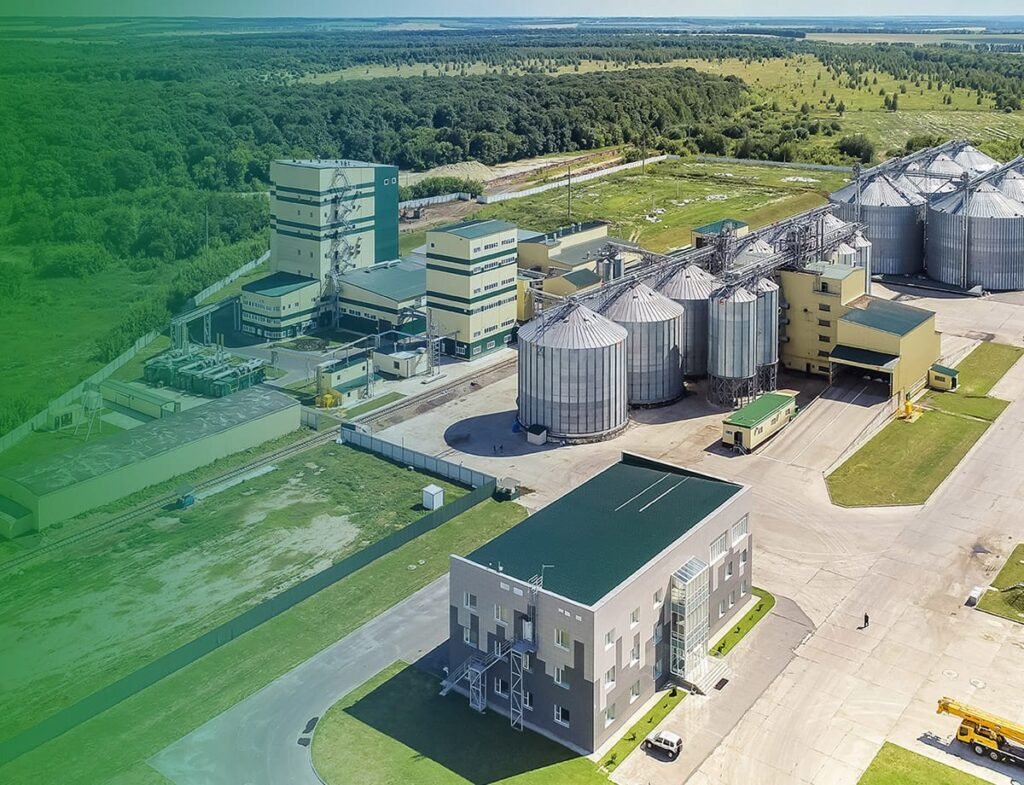
Impact on Sales Revenue:
Effective management of raw material costs can enable the feed mill to offer competitive pricing, potentially increasing market share and sales revenue. Conversely, poor cost management may lead to higher prices, which could reduce sales volume and revenue.
Energy Costs
A 100t/h feed mill consumes substantial amounts of energy, primarily electricity and sometimes natural gas or other fuels. Energy costs typically account for 5-10% of operational expenses:
- Efficiency Measures: Investing in energy-efficient feed factory machines can lead to long-term energy cost savings.
- Alternative Energy Sources: Implementing renewable energy solutions (e.g., solar panels) can provide additional cost savings over time.
Impact on Sales Revenue:
Lower energy costs can allow for more competitive pricing or higher profit margins, potentially increasing sales revenue. Energy efficiency can also be marketed as a selling point, attracting environmentally conscious customers.
Labor Costs
While a 100t/h feed mill is highly automated, it still requires skilled labor for operation, maintenance, and management. Labor costs typically account for 5-10% of operational expenses:
- Automation vs. Manual Labor: Higher automation levels can reduce labor costs but may require more skilled (and often higher-paid) technicians.
- Training and Retention: Investing in employee training and retention can enhance efficiency and lower turnover costs.
Impact on Sales Revenue:
Efficient labor management can lead to higher productivity and product quality, potentially increasing sales through improved product consistency and customer satisfaction.
Maintenance and Repair Costs
Regular maintenance is essential for a 100t/h feed mill to operate at peak efficiency. These costs typically account for 3-5% of operational expenses:
- Preventive Maintenance: Regular upkeep can prevent costly breakdowns and production interruptions.
- Equipment Lifespan: Well-maintained equipment lasts longer, reducing the need for frequent capital reinvestment.
Impact on Sales Revenue:
Effective maintenance minimizes downtime, ensuring consistent production capacity to meet sales demands. It also helps maintain product quality, supporting customer retention and potentially allowing for higher pricing.
Quality Control Costs
For a 100t/h feed mill, maintaining consistent product quality is crucial. Quality control costs typically account for 2-4% of operational expenses:
- Testing Equipment: Investments in advanced testing equipment can enhance quality consistency.
- Certifications: Obtaining and maintaining quality certifications can create new market opportunities.
Impact on Sales Revenue:
High-quality products can command premium prices and foster increased customer loyalty, positively affecting sales revenue. Quality certifications can also open doors to new markets or customers with strict quality requirements.
Research and Development (R&D) Costs
Investing in R&D is vital for maintaining competitiveness in the feed industry. R&D costs for a 100t/h operation might account for 1-3% of revenue:
- New Product Development: Creating specialized or improved feed formulations can access new market segments.
- Process Improvements: Developing more efficient production methods can help reduce costs.
Impact on Sales Revenue:
Successful R&D initiatives can lead to innovative products that command higher prices or capture new market segments, directly boosting sales revenue.
Marketing and Sales Costs
For a 100t/h feed mill, marketing and sales efforts are crucial for maintaining high capacity utilization. These costs typically account for 2-5% of revenue:
- Brand Building: Establishing a strong brand can facilitate premium pricing.
- Customer Relationship Management: Investing in customer relationships can result in long-term contracts and stable revenue.
Impact on Sales Revenue:
Effective marketing and sales strategies are directly linked to increased sales volume and potentially higher pricing, significantly impacting annual sales revenue.
Regulatory Compliance Costs
Compliance with feed safety regulations and environmental standards is essential. These costs can vary but typically account for 1-3% of operational expenses:
- Safety Measures: Implementing and maintaining safety protocols is critical.
- Environmental Controls: Investing in equipment and processes to meet environmental standards is necessary.
Impact on Sales Revenue:
While compliance costs are unavoidable expenses, they can be leveraged in marketing to demonstrate the company’s commitment to quality and sustainability, potentially supporting premium pricing strategies.
Conclusion
The cost structure of a 100t/h feed mill engineering project has a significant influence on its annual sales revenue. By effectively managing each cost component—from raw materials to regulatory compliance—feed mill operators can optimize their pricing strategies, enhance product quality, and improve market competitiveness. This, in turn, can lead to increased sales volumes, potentially higher prices, and ultimately, improved annual sales revenue.
Successful feed mill operations strike a balance between cost management and strategic investments in areas such as quality control, R&D, and marketing. By doing so, they can create a virtuous cycle where efficient operations support competitive pricing and high-quality products, driving sales revenue growth. This growth, in turn, provides the resources needed for further investments in efficiency and innovation, ensuring long-term success in the competitive feed industry.
For details please contact: Richi Pellet Machine
WhatsApp:86 138 3838 9622
Email:enquiry@richipelletmachine.com



